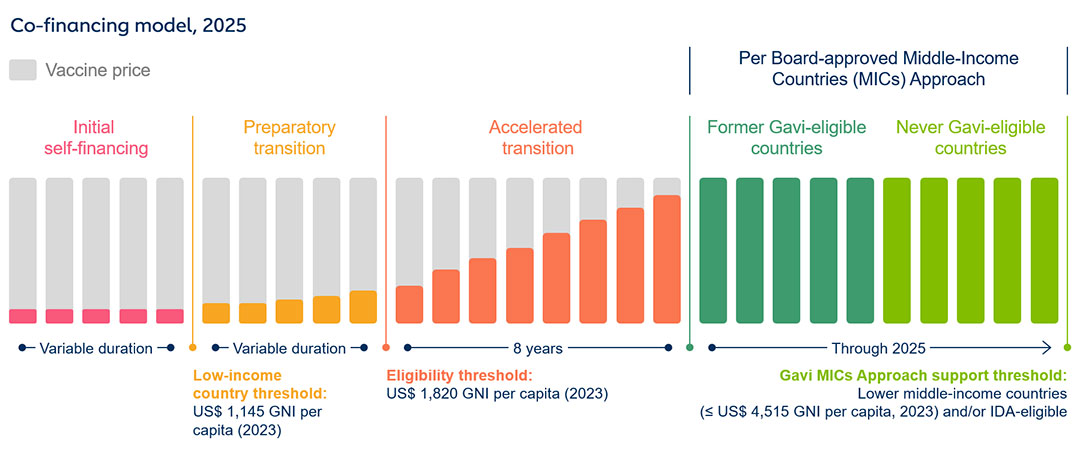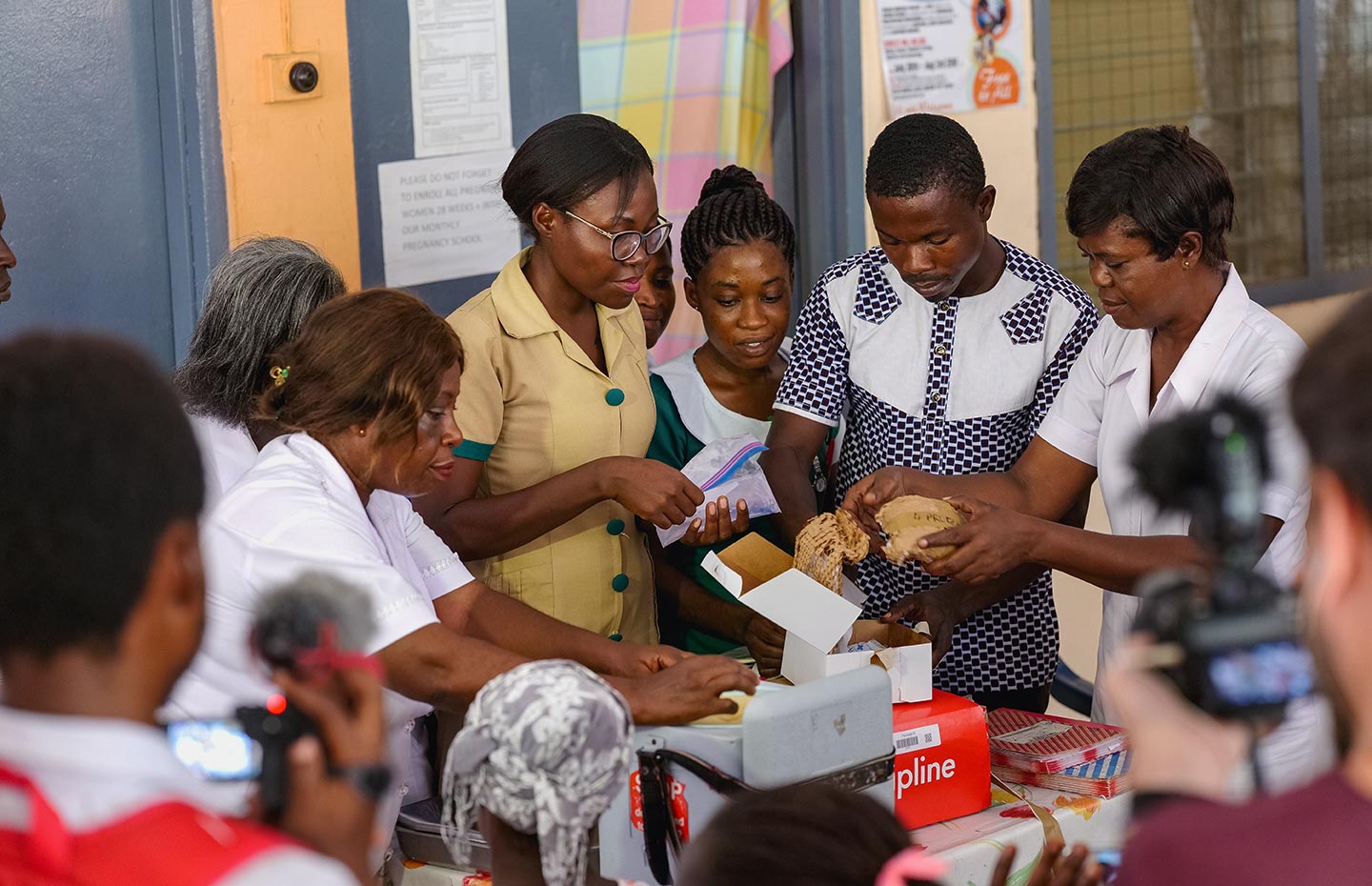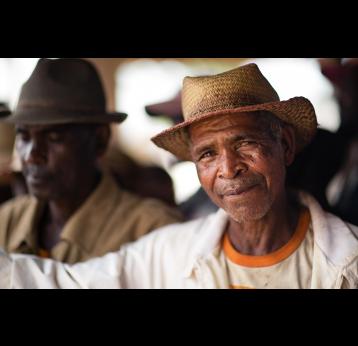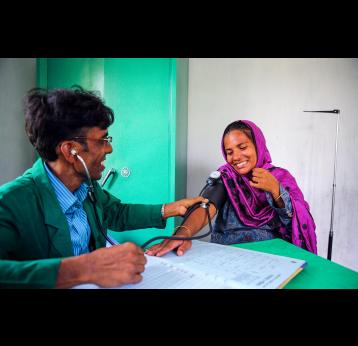At Gavi we do not just help countries expand their national immunisation programmes. We also aim to make immunisation sustainable, both financially and programmatically. This means ensuring that countries can sustain high coverage and equal access to vaccines after Gavi support ends. To achieve this, countries need to have their own robust systems and decision-making processes in place to introduce future, new vaccines, independent of the Vaccine Alliance.
Our eligibility, transition and co-financing policies are at the core of Gavi’s approach to sustainability. Our support is aimed at lower-income countries, it is time-limited and directly linked to the governments’ ability to pay for vaccines, depending on which phase of the Gavi transition process they have reached. Countries’ ability to pay is determined by their Gross National Income (GNI) per capita as calculated by the World Bank Atlas method.
Eligibility for Gavi support is determined by countries' national income.
Co-financing means that countries contribute to the cost of Gavi-supported vaccines by financing some of the required vaccine doses.
Gavi’s approach to engaging with middle-income countries
A key tool for addressing threats to equity and sustainability.
After Gavi support ends
After countries transition from Gavi support, they can continue to procure through UNICEF or self-procure.
Countries enter Gavi support in the initial self-financing phase, where they pay a small amount towards their vaccine costs. When they move to the preparatory transition phase, the price fraction of their co-financing increases by 15% per year, after the grace year. As their GNI per capita grows, they enter the accelerated transition phase – an eight-year period when co-financing reaches 100% of vaccine costs and phase-out from our support.





